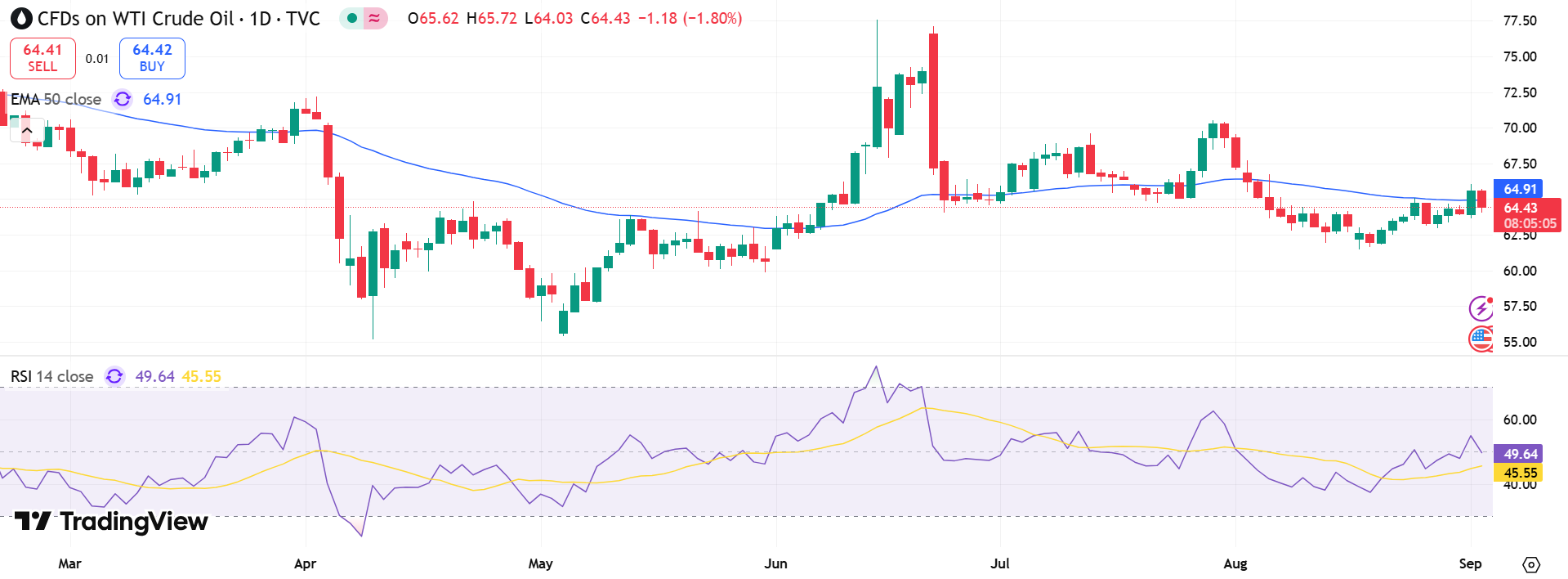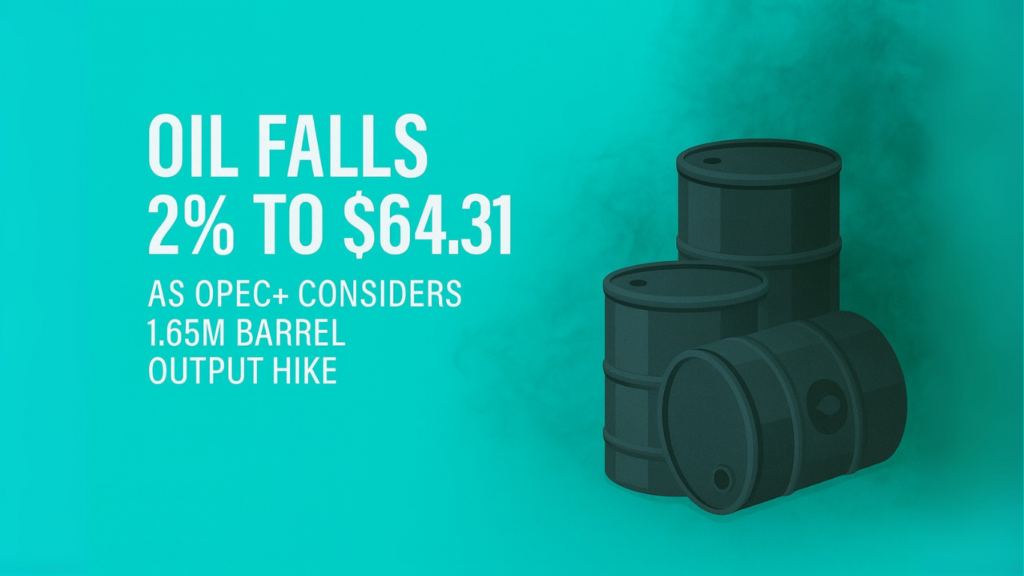Oil futures declined on Wednesday, with traders cautious ahead of an upcoming OPEC+ meeting that may lead to another production increase. Brent crude fell 1.7% to $67.98 a barrel, while U.S. West Texas Intermediate dropped 2% to $64.31 by mid-morning GMT.
The potential policy shift would mark a significant move by the producers’ alliance, which accounts for nearly half of global oil output. According to sources familiar with discussions, eight key members of OPEC and its allies are reviewing whether to lift targets in October.
If approved, the plan would unwind part of the group’s earlier output cuts—1.65 million barrels per day (bpd), or 1.6% of global demand—well ahead of schedule. This would come on top of the already agreed 2.2 million bpd increase between April and September, alongside an additional 300,000 bpd for the United Arab Emirates.
Supply Constraints Limit Actual Output
Despite these ambitious targets, actual increases have lagged. Several members have struggled to raise production due to capacity limitations, while others have reduced volumes to offset previous overproduction.
The backdrop remains complex. On Tuesday, both benchmarks had climbed more than 1% after the U.S. imposed sanctions on a network of shipping companies accused of disguising Iranian crude as Iraqi oil. This move temporarily buoyed prices, underscoring how geopolitics continues to shape energy markets.
Key figures shaping the supply outlook:
- Planned increase: 2.2 million bpd (Apr–Sep 2025)
- Additional UAE quota: 300,000 bpd
- Possible early hike: 1.65 million bpd in October
- OPEC+ market share: roughly 50% of global output

Weak U.S. Data Caps Demand Outlook
While supply-side factors dominate headlines, demand concerns remain a counterweight. A Reuters poll of analysts estimated U.S. crude inventories fell by about 3.4 million barrels in the week to August 29, alongside declines in gasoline and distillate stocks.
Still, weak U.S. economic indicators restrained optimism. The American manufacturing sector contracted for a sixth consecutive month, as ongoing tariffs pressured business confidence and curbed industrial activity.
Slowing growth raises questions about whether demand can absorb additional barrels, particularly if OPEC+ proceeds with an early hike.
For now, traders remain cautious, balancing expectations of higher output against the risk of slowing consumption in the world’s largest economy.


